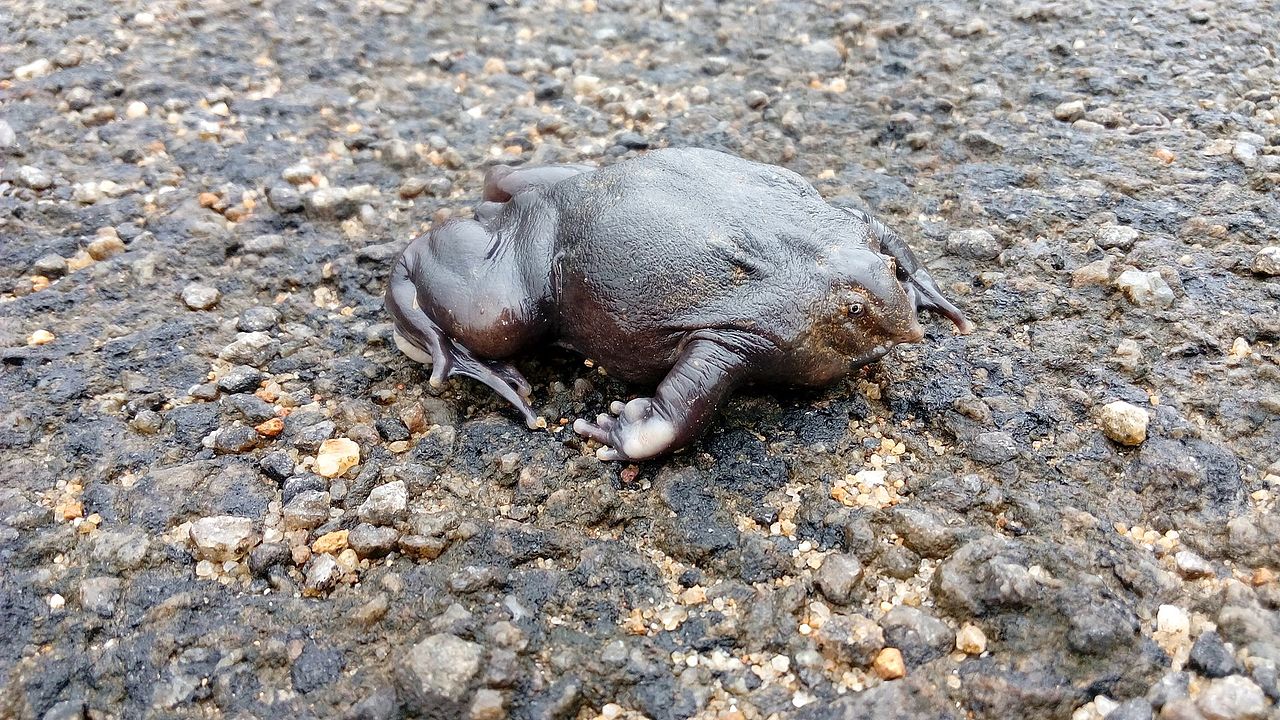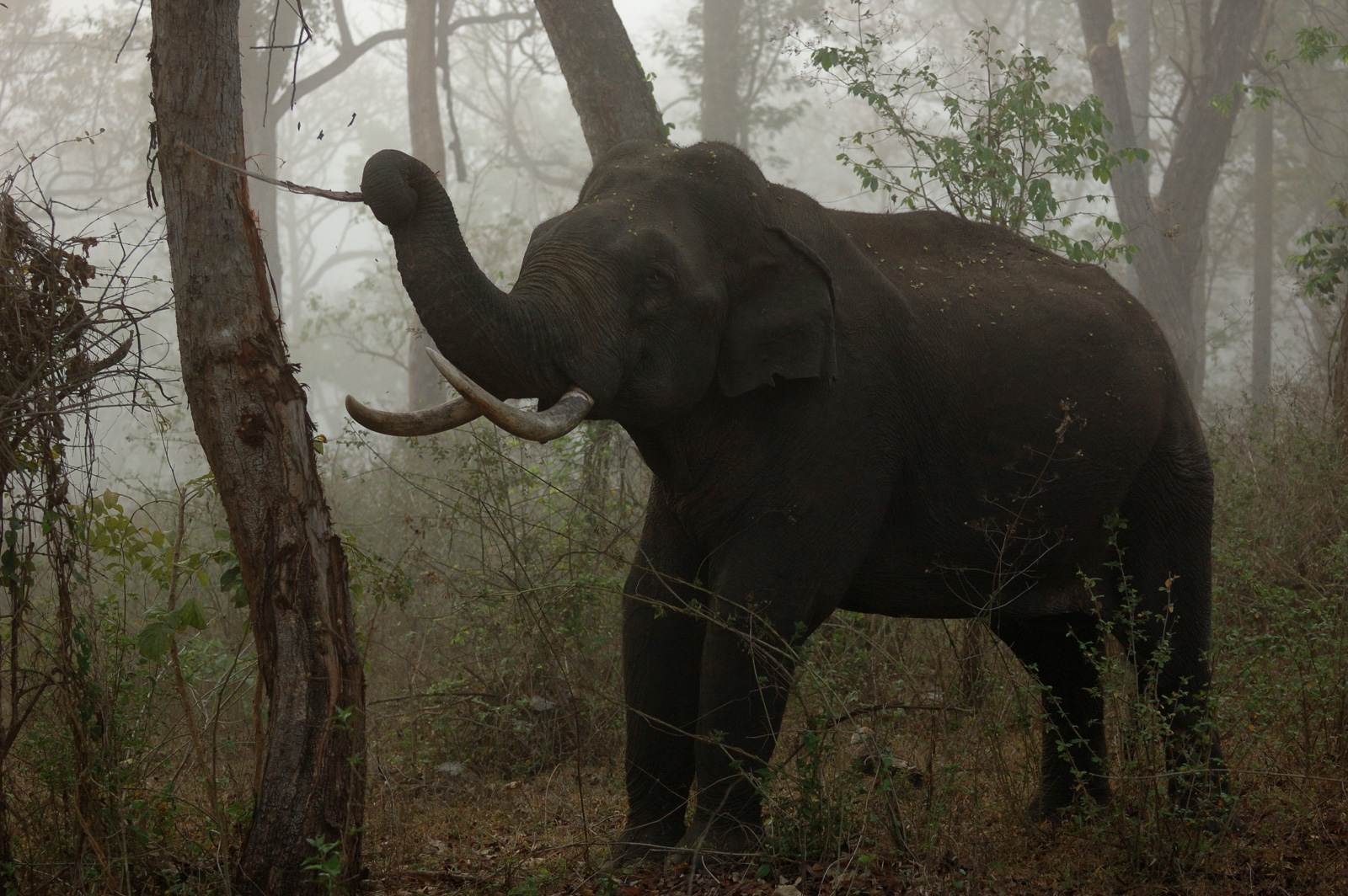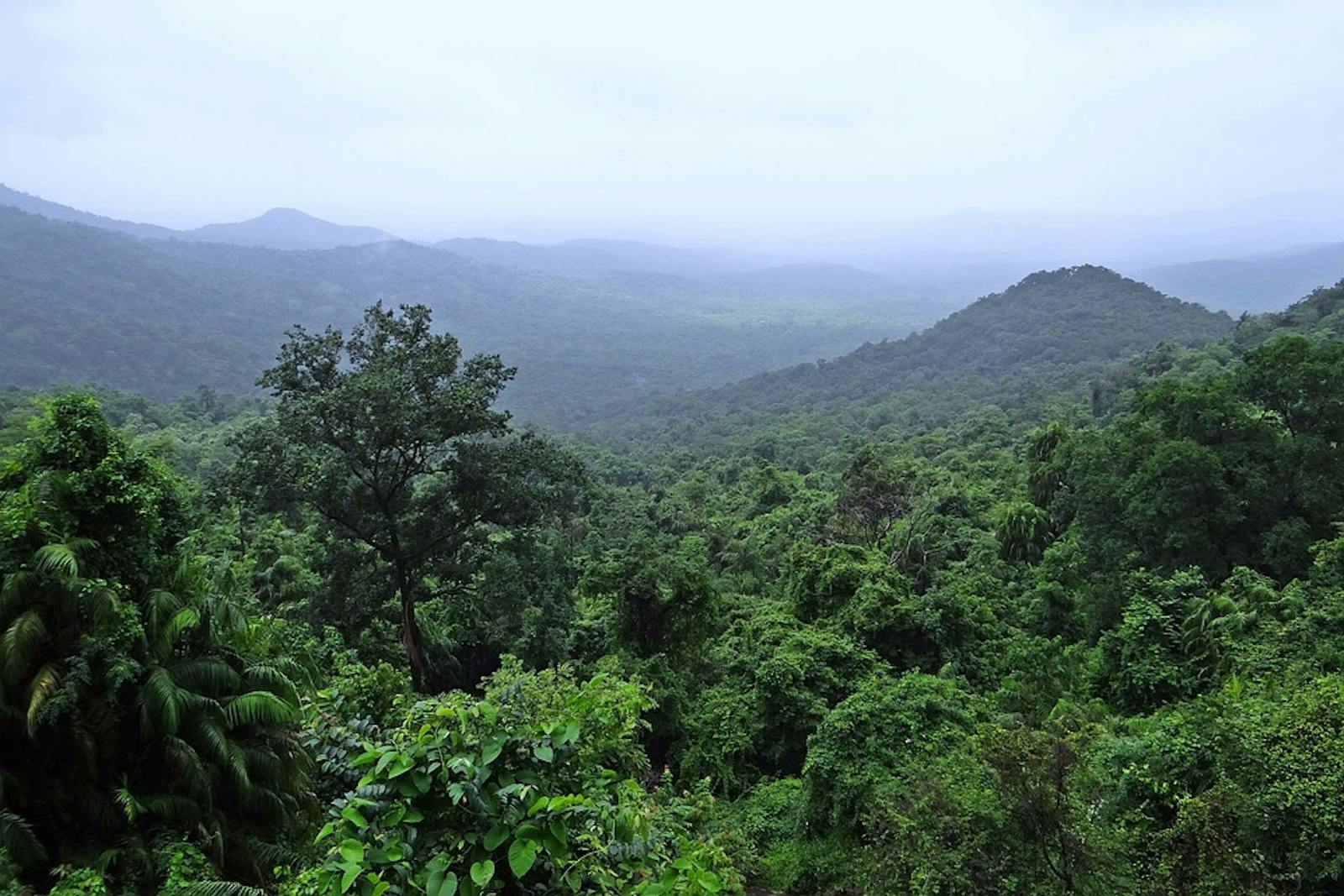North Western Ghats Montane Rainforests
The ecoregion’s land area is provided in units of 1,000 hectares. The protection goal is the Global Safety Net (GSN1) area for the given ecoregion. The protection level indicates the percentage of the GSN goal that is currently protected on a scale of 0-10.
Bioregion: Indian Tropical Coastal Forests (IM2)
Realm: Indomalaya
Ecoregion Size (1000 ha):
3,100
Ecoregion ID:
254
Conservation Target:
37%
Protection Level:
5
States: India
The North Western Ghats Montane Rain Forests ecoregion is renowned for its high endemism and species richness. Over a third of all plants, half of the reptiles, and more than three-fourths of the amphibians known from all of India are found in this narrow strip of rainforest along the mountains that parallel the west coast of India, in an area 6% the size of the whole country. The levels of endemism are most pronounced in frogs; 138 of the 158 frog species known from the mountains are endemics, found nowhere else on Earth. The endangered purple frog or pig nose frog is a living fossil, dating back to the Jurassic period before the breakup of Gondwanaland.
Close relatives of this frog are found in the Seychelles Islands, isolated in the middle of the Indian Ocean. The non-endemic species such as the tigers, common leopards, fishing cats, Asian elephants, Indian bison or gaur, sloth bears, hornbills, and cobras conjure up romanticized visions of the subcontinent’s jungles.

The flagship species of the North Western Ghats Montane Rainforests ecoregion is the purple frog. Image credit: Creative Commons
The ecoregion represents the upper montane forests along the Western Ghats mountain range, from north of Mumbai to the Wyanad evergreen forests in the south, which is a transition from the moist Cullenia-dominated forests in the south Western Ghats to the northern drier dipterocarp forests. As part of the Deccan Plateau, the ecoregion has Gondwana origins, dating back to 150 million years ago.
The Western Ghats are considered to be the abrupt edges of the continental plate that broke away from the Gondwanaland supercontinent. The complex terrain of the mountains has created localized variations in rainfall, movement barriers, and various habitat types, resulting in hotspots of endemism. The mountains intercept the southwest monsoon winds from June to September that deposit more than 2,500 mm of rainfall along the windward western slopes.

Asian Elephant. Image credit: Kalyan Varma, Creative Commons
The forests are wet and multi-storied, with heavily buttressed, 45 m tall trees, draped with climbers, lianas, and epiphytic orchids and ferns. The dominant trees are species from Dipterocarpaceae, Clusiaceae, Anacardiaceae, Sapotaceae, and Meliaceae plant families. The well-developed understory consists of bamboos, palms, and canes. Patches of stunted, twisted Syzigium spp., Rhododendron nilgiricum, Michaelia nilagirica trees, known as shola forests, grow in the higher elevations, interspersed among montane grasslands with fire and frost resistant grasses.
About 90 mammal and 325 bird species are known from the ecoregion, including several threatened species. The forests are also included within important conservation landscapes for India’s large charismatic species, especially tigers and elephants. Some of the important birds in the ecoregion include the Nilgiri wood-pigeon, Malabar grey hornbill, grey-headed bulbul, and the Malabar parakeet. These fruit-eating birds, or frugivores, that are endemic to the Western Ghats perform an important role by spreading seeds and maintaining forest architecture.
The forests of this ecoregion are now highly fragmented due to clearing for human settlement, reservoirs, various cash crop agriculture, coffee, tea, rubber, and cardamom plantations, and forestry plantations of acacia and introduced eucalyptus. Still, because of the high endemism in these mountains, conservation of even the fragments are important.
The priority conservation actions for the next decade are to: 1) integrate the remnant forest patches into a landscape-scale conservation plan for protection and necessary restoration; 2) enhance habitat connectivity for wildlife by establishing corridors between forest fragments; and 3) build partnerships with local land owners and stakeholders through innovative land-use policy and incentive schemes for conservation.
Citations
1. Anand, M.O., Krishnaswamy, J., Kumar, A. and Bali, A., 2010. Sustaining biodiversity conservation in human-modified landscapes in the Western Ghats: remnant forests matter. Biological Conservation, 143(10), pp.2363-2374.
2. Chandran, M.S., 1997. On the ecological history of the Western Ghats. Current Science, pp.146-155.
3. Bawa, K.S., Das, A., Krishnaswamy, J., Karanth, K.U., Kumar, N.S. and Rao, M., 2007. CEPF Western Ghats and Sri Lanka ecosystem profile.



